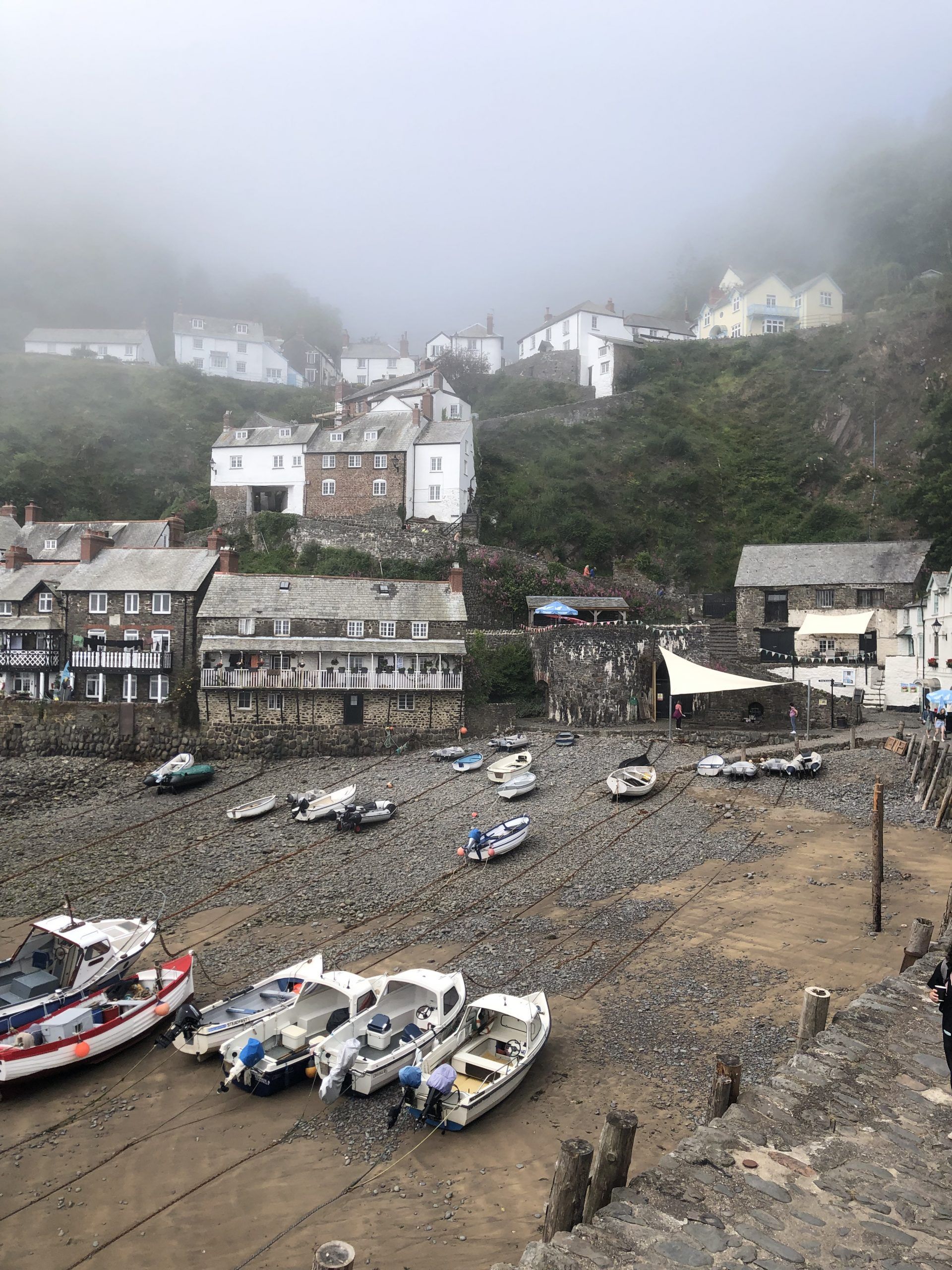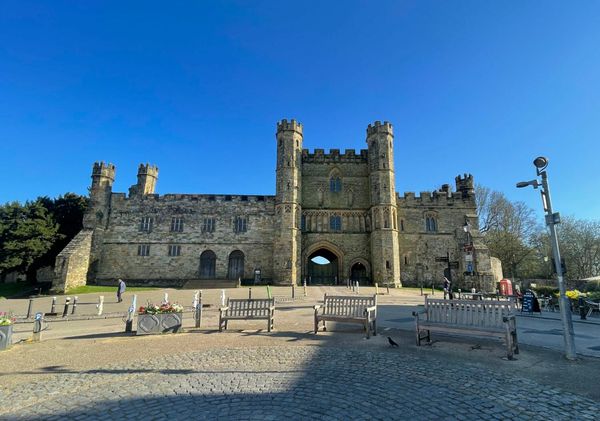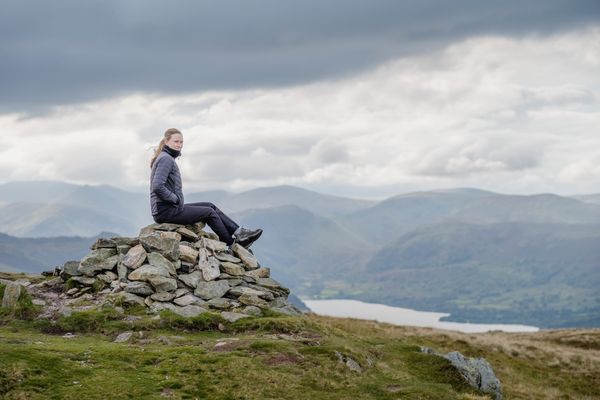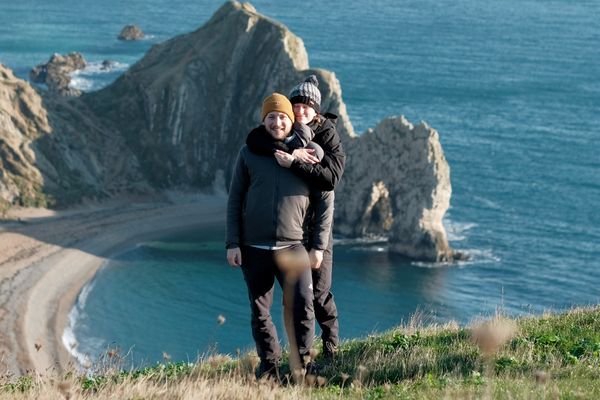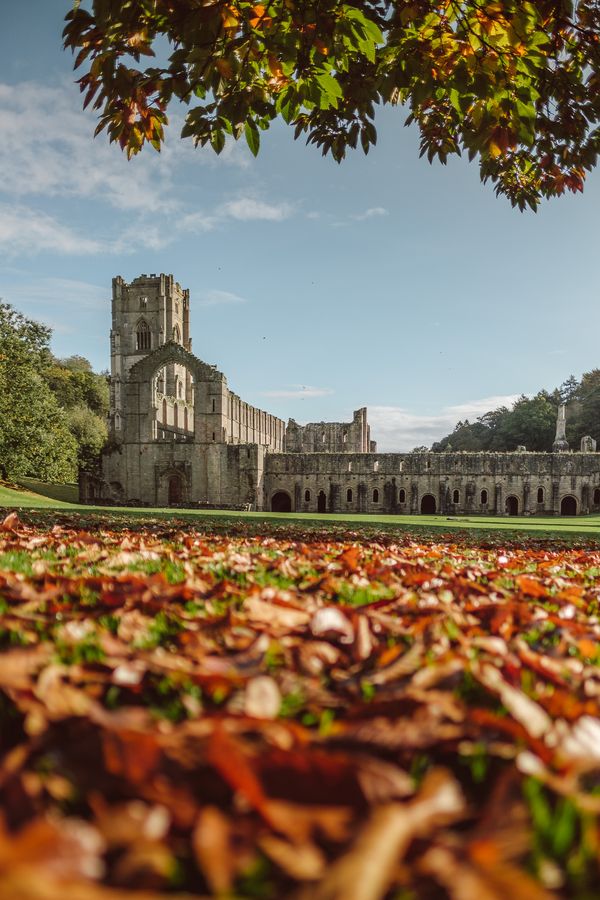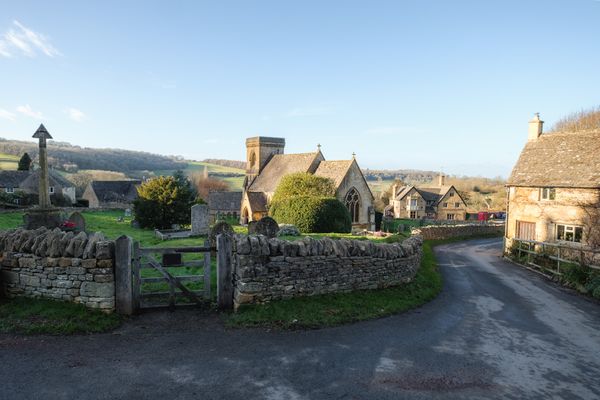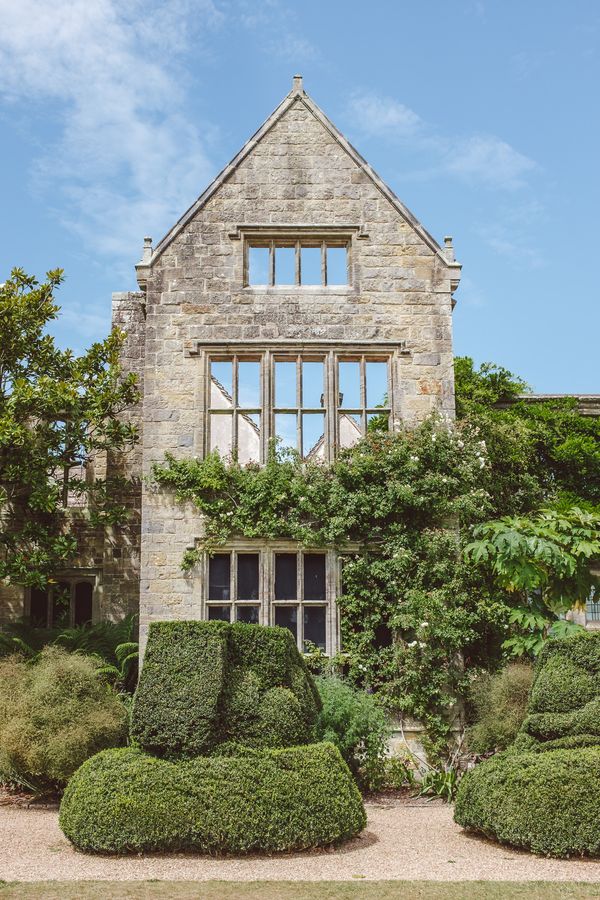During a few free days in between house sits in June, we took the opportunity to finally visit Clovelly. We’d heard a lot about this quaint seaside village – mostly that visitors are required to pay to visit, but that the price was worth it for a nosy around this tiny village frozen in time. After spending a few hours here one quiet morning, we can safely say we’ve ticked a quintessential British spot off our bucket list. Here’s all you need to know to plan your visit to Clovelly:
Table of Contents
Where is Clovelly?
Clovelly is a privately owned harbour village in Devon, England. There are no holiday homes allowed here – all 83 houses in the village are inhabited full time and approximately 300 people call the village home, making it a thriving and bustling place all year round. Clovelly is accessible via car as there is a car park at the top of the hill by the visitor’s centre, but cars cannot access the village itself as the cobbled streets are very steep! There are also buses to Clovelly from Barnstaple and Bideford, as well as the option to arrive on foot. Many reviews of Clovelly will recommend the latter option, as it is technically possible to access the village on foot via an adjacent road and therefore avoid the admission fee, but this is not something we can personally recommend.
How much does it cost to visit Clovelly?
As the village is privately owned, there is an admission fee for visitors to enter. When we visited in June 2023, we paid £8.75 each which included free parking at the visitor’s centre. The village is open to the public from 9am to 5pm each day, though be warned not all shops and pubs in the village operate during these hours. Find up to date information and current admission prices on the Clovelly website.
Things to see at Clovelly
Beginning at the visitor’s centre, there is a 20 minute video explaining the history of Clovelly. Here you’ll also find the Clovelly Collectibles shop and lifeboat shop as well as toilets and a cafe, though we chose to bypass all these and head out into the village before it became crowded with tourists. Once you head outside, a path leads you down to the Clovelly donkey stables, pottery and soap shop. Unfortunately the stables were closed for maintenance during our visit so the donkeys had been moved elsewhere – we would have loved to see them as they are an integral part of life in the village! These donkeys are famous for bringing supplies up and down the high street in Clovelly, where the cobbled road is too steep and narrow for vehicle traffic. We bypassed the pottery and soap shop until we came back up the hill on our return, but when we did pop in we were blown away by the inventive creations on sale! The pottery shop especially is worth a visit, with unusual and seasonal items on sale, and in high season visitors can book a session to make your own pot for a small fee.
The main street in Clovelly is cobbled and on a 20% gradient, making for an uneven descent to the harbour at the water’s edge. Make sure you wear comfortable shoes and be prepared to take the walk slowly! When you reach the main street of the village, take a moment to observe the house numbers – unusually, numbering starts from the first house on the left and carries on down the road before coming back up on the right, meaning the first and last numbered cottages are both at the top of the high street. It is these picturesque cottages that were the highlight of our visit, as they have been maintained in the traditional style of the fishing village for hundreds of years.
It’s worth noting that the cute shops here, selling gifts, food and drinks, don’t open until around 10.30am. We recommend you do as we did – arrive early to beat the crowds, wander down to the harbour taking photos along the way, then visit the shops on your way back up when everything is open. This will also give you the opportunity to stop off for a break or two during the steep return climb!
The harbour at Clovelly is like a postcard with the Red Lion hotel on the left, the lifeboat station on the right, and traditional Grade II listed fishing cottages lining the water, including the famous Crazy Kate’s – the oldest cottage in Clovelly, named after a fisherman’s widow. The quay dates back to the 14th century, as do many of the cottages. It was unusually misty on the day we visited, with sea fog rolling in from the water, so we couldn’t see much past the end of the harbour – though we’ve heard it’s possible to spot dolphins here! We made a short journey along the beach and back, though it took a while to navigate the huge pebbles that make up the beach, so we could visit the small waterfall that runs into the sea here.



We spent a short time sitting at the Look Out, where villagers used to watch for returning boats, but with the sea fog showing no sign of shifting we chose to make our way back up the hill through the village. Some alleyways in Clovelly are private – it is an inhabited, working village after all – though we loved making our way along the cobbled streets, passing underneath Temple Bar Cottage where the kitchen and dining room overhang the street. We passed the Harbour Master’s cottage, decorated with a beautiful wreath made from mussel shells, and countless other homes that had been decorated with items nodding to the village’s fishing history. While Clovelly was once a bustling port, fishing has declined here in recent years, though it remains part of village life.
For those interested in learning more about the history of Clovelly, the Kingsley Museum is dedicated to Charles Kingsley who lived here as a child and wrote the classic ‘Westward Ho!’ while later staying in the village as an adult. There is also the Fisherman’s Cottage, preserved in the 1930s style, showing how a family would have lived here at the time.
As we left before lunchtime we didn’t sample any food for sale in the village, but the Cottage Tea Rooms offer a slice of Devon tradition in their cream teas, and the Red Lion Hotel has a Harbour Restaurant serving locally-sourced food, including the famous Clovelly lobster, with vegetarian and vegan options available.
When you’ve explored all the sights within the village, we highly recommend ending your visit at the Clovelly Court gardens where the walled kitchen gardens, with restored Victorian glasshouses, offer a feast for the senses. The garden was absolutely bursting with colour during our visit in June, with towering poppies and dozens of foxgloves. The incredible variety of fruits and vegetables grown here supply the Red Lion Hotel, but it’s also possible to take some home with you! Best of all, the admission fee to the Gardens is included in the price of your ticket into Clovelly village.
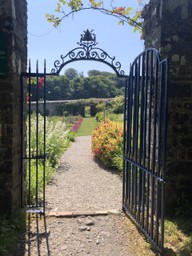


How much time do you need to explore Clovelly?
We spent around 2 hours at Clovelly – enough time to snap some photos, discover all the quaint side streets and take it slowly on the steep return journey back up the cobbled street! Had it been a sunny day, and we weren’t under a blanket of view-obstructing fog, we could have easily spent longer admiring the views from the harbour. If you’re looking to add a food stop to your trip you’ll need to allow at least another hour, and make sure you check what time the establishments are serving food – more than a few visitors get caught out by the unusual service hours of the traditional pubs and cafe here.
If you have mobility issues, the steep hill may prove to be a challenge and it may take longer to get around the village. From Easter – October, there is a Range Rover service that takes visitors from the harbour to the top of the hill, for a small fee. Don’t underestimate how much longer it will take you to make the return journey – hence why we recommend bypassing most parts of the village until you make your way back up the hill, so the points of interest can provide a chance to catch your breath!
When is the best time to visit Clovelly?
Unusually for us, this is one of the ONLY places that we will recommend you visit in peak season. During the off- or shoulder-seasons, there is no guarantee that parts of the village will be open to visitors. Any negative reviews of the village that you read online will almost certainly cite short pub opening hours, road works, or activities not running as a factor in a disappointing trip. Even visiting in June, we were slightly disappointed to miss the famous Clovelly donkeys as the stables were undergoing maintenance. Arrive early in the day to take postcard-perfect pictures with the fewest amount of tourists in your shot, and head to the village in the middle of July to experience the best atmosphere, activities and sights Clovelly has to offer.
Can you stay in Clovelly?
It is possible to stay in Clovelly at one of the hotels or B&Bs located right in the heart of the village. The highest rated of these is The Red Lion Hotel, a 4 star hotel perfectly situated on the harbour for gorgeous sea views and free use of the Land Rover service that transports visitors up and down the steep main street.
If you prefer to be away from the hustle and bustle of the harbour, but would still love to wake up to a sea view from your window, The New Inn boasts 11 en-suite rooms as well as a restaurant, coffee shop and bar serving a selection of their very own Clovelly Brewery artisan beers and ciders, perfect for enjoying on a sunny day in their garden and outdoor seating area.
For a cosier atmosphere right in the middle of the main street, Harbour View cottage dates from the 14th century and has just 4 rooms. One of the double rooms is dog-friendly, so you can bring your four-legged friend along for an adventure! Here you can enjoy a traditional full English breakfast each morning, with vegetarian, vegan and gluten-free options available.
Is visiting Clovelly worth it?
If you’re able to visit at just the right time, we believe a visit to Clovelly is worth it – though perhaps just the once. It’s magical to see this quintessential British village still continuing its historic traditions, and all the small details on the exteriors of the 14th century cottages make it a truly unique place to visit. For us, there isn’t enough to make it worth paying the £8.75 admission fee more than once – we feel we saw everything there is to see during our visit (donkeys aside), and wouldn’t necessarily need to visit again when there are other seaside villages around Devon and beyond that don’t require visitors to pay a fee. The admission fee also made us reluctant to spend any additional money in the village, having already spent £17.50 between us just to enter Clovelly. It’s a wonderful stop for photographers, and it’s fascinating to explore more of the village’s rich history – but both of these can be achieved in just one visit. For those that have some time in the area, a ticket to Clovelly includes one additional visit free of charge within the week of purchase. If we’d had a few more days to spare, we would have chosen to return just to see the village on a fair weather day and check out the (hopefully fog-free) view from the harbour.



Our tips for visiting Clovelly
A few things to consider when planning your trip!
- Check the weather. Unfortunately for us we only had a small window in which to visit Clovelly before we continued on with our travels, so we had to take the chance to go on an unusually foggy morning in June. If you’re in Devon for a few days, pick a day when the sun is shining to see the village at its best!
- Wear sturdy shoes! It might be tempting to wear pretty flats or heels to get an Instagram-worthy portrait in Clovelly, but trust us when we say you’ll need some good, comfortable walking shoes to survive the steep, uneven, cobbled streets!
- Clovelly is dog-friendly! So you can bring your four-legged friend with you. Both hotels in the village have dog-friendly rooms, the Cottage Tea Rooms allow dogs in the garden, and the Fisherman’s Cottage allows dogs too. Just make sure you pack some water and a bowl for your pooch if you’re visiting on a hot day.
- Don’t skip the Gardens. Although the Clovelly Court Gardens aren’t large by any means, they are the perfect way to end your time at Clovelly. A short stroll around the garden, through the Victorian glasshouses, picking up some of the fresh fruit and veg on the way, is absolutely blissful.
While you’re in the area
- Walk along the coastal path into Ilfracombe. We walked into Ilfracombe from Combe Martin, and the scenes from the coast path are stunning – from small harbours and beaches to fields bursting with foxgloves, and eventually a top-down view of Ilfracombe itself from the cliffs above. Once in the town, you can explore the lifeboat station that has been in Ilfracombe for almost 180 years, admire Damien Hurst’s statue ‘Verity’ in place at the harbour, and treat yourself to a traditional Devon pasty from one of the many, many seaside food establishments. We devoured ours while sat on a bench overlooking Wildersmouth Beach – just watch out for the seagulls!
- Hike through the Valley of the Rocks. This dramatic section of coastline near Lynton is famous for the dry valley that runs parallel to the coast, and the stunning views from the rocks on either side. It’s a popular destination as the path along the cliffs not only makes for spectacular views, but there are also herds of feral goats living here! We spent some time admiring them along our 5.5km circular hike as we made our way into the quaint town of Lynton, which is also well worth a visit. If you like typical British towns, Lynton has it all – a sweet cliffside funicular railway, a network of streets to explore and lots of gift shops selling local wares.
- Stay at Newberry valley campsite. For our few days in Devon, we stayed at this expansive but surprisingly peaceful campsite. They have pitches for caravans and motorhomes, as well as hikers’ pods and shepherds’ huts. Chris also kept a secret from me until we arrived that there are alpacas on site here! The campsite is a 5 minute walk from Combe Martin – another typical British seaside village – and Newberry Beach, where we went for a quick dip in the sea and spotted dozens of jellyfish!
If you found this post helpful, please consider supporting our blog by donating as little as £1 to our running costs! Thank-you!
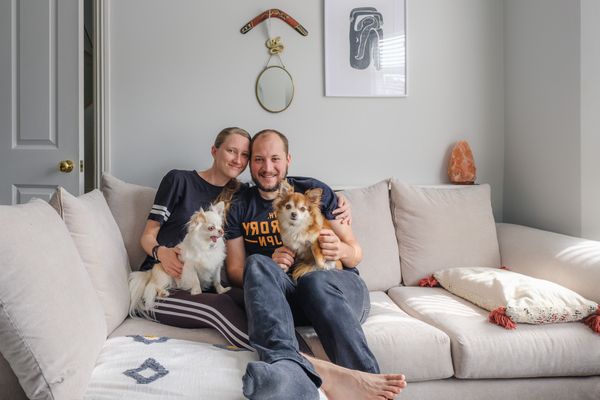
We are Chris+Suze
